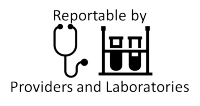Hemolytic Uremic Syndrome


Infectious agent: Shiga toxin-producing E. coli (most commonly STEC O157).
Description of illness: HUS is a serious sequela of enteric infection with Shiga toxin-producing E. coli (most commonly STEC O157). Children under 5 years of age, the elderly and immunocompromised persons are at greatest risk of developing HUS. About 8% of children (and a small percentage of adults) with STEC O157 diarrhea develop HUS. HUS is diagnosed by microangiopathic hemolytic anemia, thrombocytopenia and renal failure. HUS is usually preceded by a prodromal gastrointestinal illness, or less commonly, an upper respiratory illness. The prodrome is nonspecific and may include malaise and diarrhea, which may be bloody, within 10 days of diagnosis. If patients have no laboratory evidence of hemolysis, thrombocytopenia or nephropathy 3 days after resolution of diarrhea, their risk of developing HUS is low. Up to 5% of pediatric HUS results in death, and 12% of patients will have severe sequelae such as renal impairment, neurological injury or hypertension.